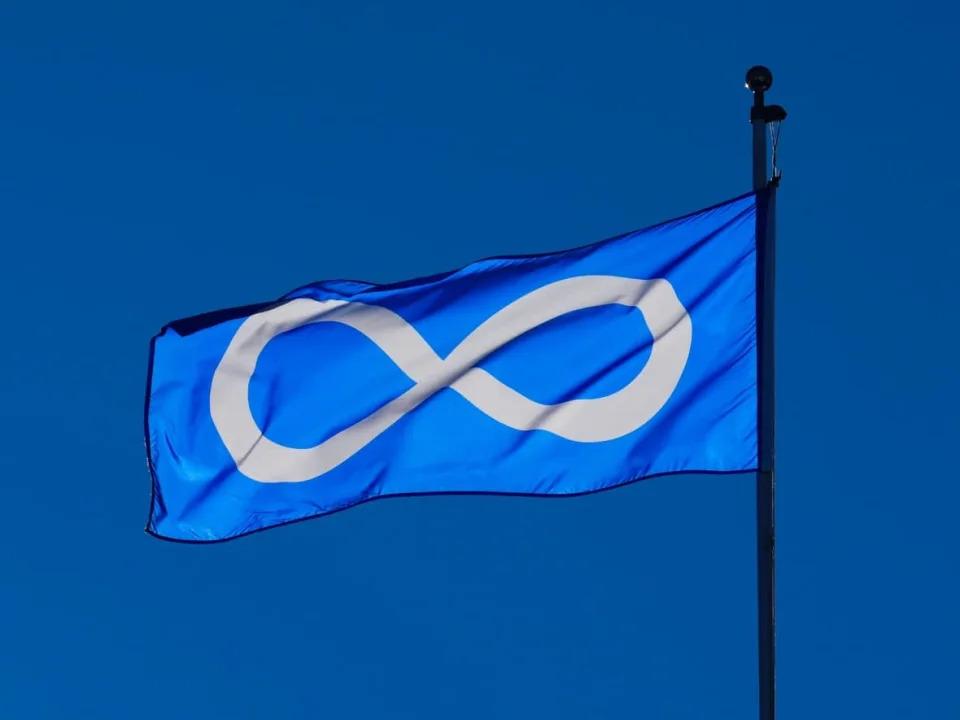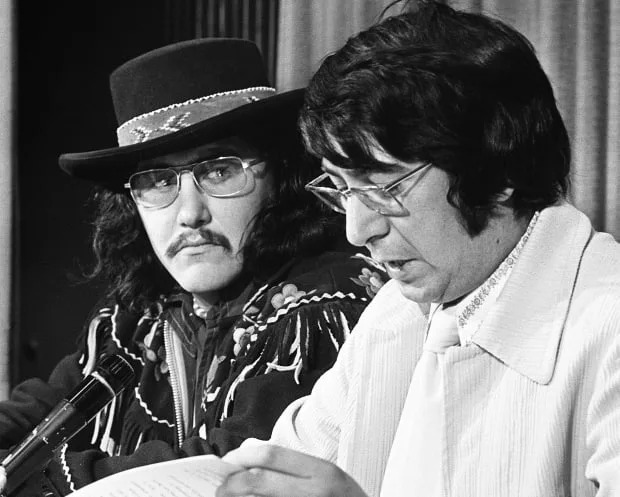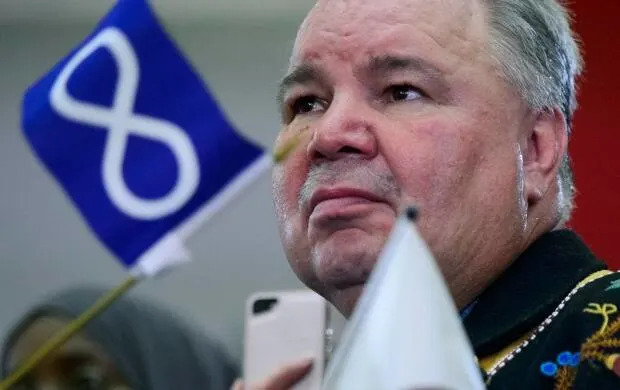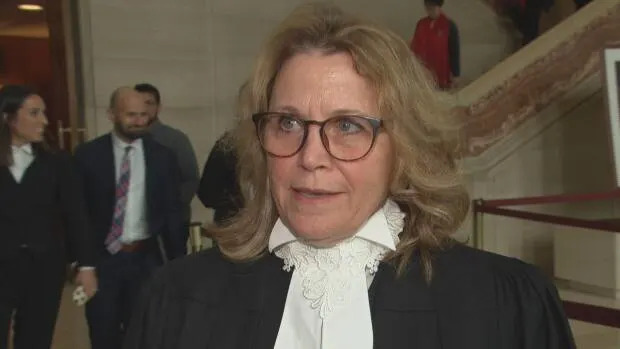- Critics of the neo-conservative movement in the U.S. White House have identified the philosopher Leo Strauss as their mentor . Strauss however has his most ardent followers in the neo-conservative movement not in the U.S. but in Canada. The real Straussian School is at the University of Calgary.
- They are political advisor's to the Alberta Government and to the Federal Harper Conservative Government. Both governments which practice a Straussian politics of secrecy and elitism combined with a Schmitt authoritarianism of the strong man as leader. They are known as the Calgary School of right wingers who teach political science, and military history etc.at the University of Calgary; Barry Cooper, Tom Flanagan, David Bercuson, Ted Morton, et al.
The Calgary School has both European and American roots and sources. Three leading Europeans have done much to shape and form the Calgary School. Those of us who spend a good deal of time teaching political theory cannot avoid the names of Leo Strauss, Eric Voegelin and Frederick Hayek. Hayek and Voegelin were Austrians. Hayek was a great fan of free trade, and Voegelin was an opponent of Hitler. He fled Austria when Hitler came to power; he came to the USA and taught there for much of his life. Leo Strauss fled Germany, like Hannah Arendt, when Hitler came to power, and both came and settled in the USA. These Austrian and German refugees, for different reasons, saw the USA, as the great and good place. It was, was it not, the country that defended liberty and freedom against the totalitarianism of Germany, Italy, Japan and Communism. The Calgary School is very much indebted to those like Strauss, Voegelin and Hayek for their inspiration, and many within the Calgary School are well known scholars in the area of Strauss, Voegelin and Hayek. The point to note here is that the Calgary School does not take its lead from the indigenous Canadian tradition. They turn elsewhere for their great good place. Such is the nature, DNA and way of the compradors. But, there is more to the tale than this.
The Calgary School also has strong American roots. Again, the comprador way comes to the fore and front stage. Tom Flanagan is well known in Canada for his revisionist read on Louis Riel. He was also born and bred in the USA, and he has strong American republican leanings. Barry Cooper is yet another of the clan. He is a Canadian, but he did his graduate studies in the USA, he did not find much support for his republican leanings at York University, hence he turned to the political science department at the University of Calgary. Cooper is a well-known Voegelin scholar. David Bercuson, Ted Morton and Rainer Knopff fill out the ranks quite nicely. At a more popular level, of course, Ted and Link Byfield have played their roles in shoring up and defending the American republican way. The comprador class in Alberta did much to both bring Preston Manning to power and to dethrone him. Stephen Harper was more the ideologue that served their purposes; hence he was offered the crown he now wears.
In the dance of the dialectic the most ardent critic of Strauss and Straussian politics of the neo-con right is also a graduate of the University of Calgary; Shadia Drury. Her work the result of being in a school dedicated to real Straussian politics.
As with Strauss the Calgary School is well versed in Marxism and critiques of Marxism as we can see in the publications of its major proponent Barry Cooper. Cooper admire's Leo Strauss, Carl Schmitt and Eric Voegelin and see's them as the political alternative to Marxism, and ironically these political philosophers are far more statist than Marx was.
It was very difficult to read Leo Strauss (1). But I did manage to wring out some ideas. He says if political philosophy wants to do justice to its subject matter, it must strive for "genuine knowledge" of "true standards" (2). This absolutist idea may be at least in part the reason Straussians (and neoconservatives) are willing to force a political system on countries, using war, lies, and the like. He begins to discuss Machiavelli (3) and says Karl Marx was a Machiavellian, which moves me toward the edge of my seat (even though this is no surprise) and this movement continued as I read more of Strauss on Machiavelli. The latter continually made me think of Bush and his neoconservatives.
Leo Strauss, and Eric Voegelin are Anti-Hegelian, like Karl Popper, declaring that Hegel is the end of history, that philosophy thus needs to return to its ancient sources. In Hegel they see Gnosticism, and attack his and Marx's dialectics as heresy, embracing the fundamentalist and literalism of the evangelical Christian right.
There are four major periods in Hegel’s life during which he seems to have been strongly under the influence of Hermeticism, or to have actively pursued an interest in it. First, there is his boyhood in Stuttgart, from 1770 to 1788. As I shall discuss in detail in chapter 2, during this period Württemberg was a major center of Hermetic interest, with much of the Pietist movement influenced by Boehmeanism and Rosicrucianism (Württemberg was the spiritual center of the Rosicrucian movement). The leading exponents of Pietism, J. A. Bengel and, in particular, F. C. Oetinger were strongly influenced by German mysticism, Boehmean theosophy, and Kabbalism.
This is no abstract philosophical debate, the social conservative protestant right wing has a new political theology. It opposes liberal society as Gnostic, and blames liberalism, relativism, values laden education, etc. as the basis for Totalitarianism. Strauss, Voegelin and Schmidt argued that Hegel was the source of the Nazi's political power and thought, as did Karl Popper, then the same argument was applied against Marx, Marxism and the Soviet Union during the Cold War. Today their followers like the Calgary School and others use it against the pluralistic social democratic polity in Canada, they indeed loathe Canadian society as it is.
Hegel is known largely through secondary sources and a few incriminating slogans and generalizations. The resulting myth, however, lacked a comprehensive, documented statement till Karl Popper found a place for it in his widely discussed book, The Open Society and Its Enemies. After it had gone through three impressions in England, a revised one-volume edition was brought out in the United States in 1950, five years after its original appearance. Walter Kaufmann
Hegelian Dialect is a perfect example of what J. Budziszewski (What We Can't Not Know, pp. 187) termed the "black magic spells of imposture and unraveling." Hegel's form of dialectics is itself an impostor. It effectively unravels truth and norms and then replaces them with a 'new truth' which is yet another impostor.
Whence came the deformed conceptions of anti-Constitutional, regulatory government and judicial activism?
American liberal-socialism is the gnostic descendant of the French Revolution and its Reign of Terror. The genealogical connection begins with Henri de Saint-Simon, the French intellectual who codified the doctrine of socialism in the first decades of the 1800s, shortly after the Revolution.
His colleagues and followers, including Auguste Comte, formed a body of disciples known as the Saint-Simonians. They spread the Gnostic gospel to German universities, where it became mixed with the philosophies of Fichte and Hegel.
Hegel studied alchemy, Kabbalah (caballa, kaballa, etc.) and theosophy. He "read widely on Mesmerism, psychic phenomena, dowsing, precognition and sorcery. He publicly associated himself with known occultists.... He believed in an Earth Spirit and corresponded with colleagues about the nature of magic.... He aligned himself, informally, with 'Hermetic' societies such as the Freemasons and the Rosicrucians" and embraced their symbolic systems of sacred circles, mystical triangles and astrological signs.[3]
Considering Hegel's occult connections, it's not surprising that his teachings would undermine Biblical faith and all opposing facts. Nor is it strange that the postmodern generation has been largely immunized against genuine Christianity. After all, Hegel's revolutionary dialectic process was the center-piece of Soviet brainwashing. It effectively purged God's unchanging truths and filled the vacuum with evolving "truths" and enticing dreams.
While Communist leaders embraced Hegel's process, they ignored his occult beliefs. In contrast, the Western world began to restore those pagan roots long before revolutionary baby-boomers began shouting their demands for sensual freedom and earth-centered spirituality. In other words, the sixties didn't initiate this radical change; the turmoil of the sixties was the result of the psycho-social program of "re-learning" which had begun to transform America decades earlier.
These are the arguments of the Cold War, which while now over, remains the bugaboo of the right. One does not invest fifty years of constructing anti-liberal, anti-socialists, anti-secular, anti-humanist arguments to abandon them with the mere collapse of the Berlin wall. Today the arguments used against socialism and liberalism by Strauss, Voegelin and Schmitt are now used in day to day editorials and arguments from the Right.
In Terror and Civilization: Christianity, Politics, and the Western Psyche, Drury regards the contemporary political problem as "thoroughly Biblical." "Each (civilization) is convinced that it is on the side of God, truth and justice, while its enemy is allied with Satan, wickedness, and barbarism."
"A civilization can .. advance and decline at the same time-but not forever. There is a limit towards which this ambiguous process moves; the limit reached when an activist sect which represents the Gnostic truth organizes the civilization into an empire under its rule. Totalitarianism, defined as the existential rule of Gnostic activists, is the end form of progressive civilization." Eric Voegelin.
In the realpolitik's of Cooper and the Calgary School the fundamentalist protestant right wing are the foots soldiers in their cynical attempt to restore a new age of Plato's Philosopher King through the creation of right wing populist political movements and parties. They created it in the autarchic leadership of Preston Manning over the Reform Party and now in the autarch in Ottawa who rules in the name of a reborn Conservative party, which is the ultimate Big Lie.
Strauss taught that an elite, wise ruling class must rule the unsophisticated masses by telling them noble lies for their own good.
Strauss loved Plato, interpreting his teachings to mean, “... true democracy is an act against nature and must be prevented at all costs.”
“Because mankind is intrinsically wicked, he has to be governed,” Strauss wrote. “Such governance can only be established, however, when men are united - and they can only be united against other people.” Leaders must always provide an enemy.
Straussian teachings spark delusions of grandeur in neocon intellectuals, who imagine themselves as the wise ruling elite, set free of the bonds of honesty and equality.
While publically declaring themselves libertarians of the right, they are anything but, again the Straussian deception and lies that cover their realpolitik. They want Plato's Philosopher King, the supreme ruler, and they see him sanctioned by the politics of social conservative Christianity.
What are we to think of Strauss? Murray Rothbard addressed this question more than forty years ago, in several reviews of Strauss’s works, written for the William Volker Fund. The situation that Rothbard confronted differed entirely from the present. Strauss did not then appear, whether rightly or wrongly, as the supposed mastermind behind an aggressive American foreign policy. Quite the contrary, to most American conservatives in the 1950s and 1960s, Strauss seemed a valiant battler against positivism and historicism in political science. In their stead, he wished to revive the study of the Greek classics; and he appeared to defend natural law against its modern detractors. Would Rothbard, himself a champion of natural law, find in Strauss a welcome ally?
Rothbard located a fatal flaw in Strauss’s work. He was no friend whom libertarians should rush to embrace: his view of natural law was entirely mistaken. Further, his mistake was not a mere theoretical failing, of interest to no one but a few scholars. The misunderstanding of morality that ran through Strauss’s work might lead, if applied in practice, to immense harm. Strauss wished to replace the ironclad restrictions on the state, imposed by natural law rightly understood, with the "prudential" judgments of political leaders who aim to enhance national power.
Murray N. Rothbard – writing over forty years ago – had Strauss's number:
"As Strauss sees matters, classical and Christian natural law did not impose strict and absolute limits on state power; instead, all is left to the prudential judgment of the wise statesman. From this contention, Rothbard vigorously dissents. 'In this [Straussian] reading, Hobbes and Locke are the great villains in the alleged perversion of natural law. To my mind, the 'perversion' was a healthy sharpening and development of the concept.' … Strauss's rejection of individual rights led him to espouse political views that Rothbard found repellent: 'We find Strauss . . . praising 'farsighted', 'sober' British imperialism; we find him discoursing on the 'good' Caesarism, on Caesarism as often necessary and not really tyranny, etc... he praises political philosophers for yes, lying to their readers for the sake of the 'social good'…. I must say that this is an odd position for a supposed moralist to take.'"
The Calgary School promotes the politics of Leo Strauss, Eric Voegelin and Carl Schmitt, secrecy, power in the hands of a strong man, power must be held at all costs, and the cynical use of the religious right/ social conservatives as your base. Even if it means lying to the public and hiding your real agenda. Harper fits that bill as much as Bush does.
In fact I would argue that Harper has taken the ideological political formula that the right has devised from the works of Strauss and Schmitt to heart more so than his Yale counterpart. For an analysis of the influence of Carl Schmitt on the Harper autocracy see my; Post Modern Conservatives.
Despite the Conservative five priorities, their economic or environmental policies, Harpers regime comes down to two key right wing elements; Militarism and increasing the power of the Police and the Security State; Heil Hillier, Maintiens le droit.The secrecy of the state, the rule of elite, the mobilization of your base against perceived enemies is the neo-conservative politics of the Reform/Alliance/Conservative party in practice. Which was ok to gain power, but now that they are in power the continuation of the secret strong man state has shocked it's conservative base speechless.
Strauss's thinking seems in important respects tailor-made for a rising elite that wants, on the one hand, to justify its own claim to power and, on the other, to discredit an older elite that it is trying to replace.
Under Harper the Reform Party populist democratic renewal project is but a shadow of itself; take Senate Reform, still a matter on the agenda, but it is not the Triple E Senate of the Reform Party. The Reform shadow play is there to satisfy the base that this is still Manning's old party, which of course it isn't.
Beginning almost twenty years ago, "the Calgarians" cultivated a relationship with the nascent Reform Party. Although the latter was perhaps too populist and plebiscitary in tone for their comfort, both Calgarians and Reformers were possessed of a conviction that the western provinces were being shortchanged within confederation as successive governments in Ottawa concentrated so heavily on the festering Québec issue.
Harper, unlike Preston Manning, was a student of the Calgary School. Harper's political practice is influenced more by this than Manning was. Hence Harpers surprise; the recognition of Quebec as a nation, giving it the separatism it wants within a decentralized federal state. That is more the nuanced politics of the Calgary School than the Reform Party demand that the West Wants In. The old anti-bilingualism of the Reformers is replaced with the subtle Two Distinct Languages policy of the Conservatives. Which again appeals to Quebecois nationalism, while also keeping the rest of Canada happy with one language; English.
And it is clear that the Calgary School influenced the Conservatives Environmental policy more so than Green Conservative Calgarians; Preston Manning and Joe Clark, since Barry Cooper is a founder of the climate change denier group the Friends of Science (sic). Science has nothing to do with it they are Friends of the Oil Patch. And in typical Straussian fashion all the Conservatives discussions with stakeholders on the environment were held in secret.
Also see my;
Whigs and Tories
by Shadia B. Drury
There is a certain irony in the fact that the chief guru of the neoconservatives is a thinker who regarded religion merely as a political tool intended for the masses but not for the superior few. Leo Strauss, the German Jewish émigré who taught at the University of Chicago almost until his death in 1973, did not dissent from Marx’s view that religion is the opium of the people; but he believed that the people need their opium. He therefore taught that those in power must invent noble lies and pious frauds to keep the people in the stupor for which they are supremely fit.
Not all the neoconservatives have read Strauss. And those who have rarely understand him, for he was a very secretive thinker who expressed his ideas with utmost circumspection. But there is one thing that he made very clear: liberal secular society is untenable. Religion is necessary to provide political society with moral order and stability. Of course, this is a highly questionable claim. History makes it abundantly clear that religion has been a most destabilizing force in politics—a source of conflict, strife, and endless wars. But neoconservatives dogmatically accept the view of religion as a panacea for everything that ails America.
- Leo Strauss
- By John Gueguen, 13 May 2003. A memo in which Gueguen provides background for anyone wanting to investigate whether there may be substance to the allegations of Leo Strauss's complicity in the political work of contemporary “Straussians”.
1. The past decade has produced a ferment of critiques and defenses of Strauss in respect to several themes having to do with the general tenor of his work and of its particular aspects. I maintain a substantial file on this part of Strauss research, along with a larger collection of materials that extend back to my own study with him at Chicago in the early 1960s when I was pursuing the Ph.D. there.
2. This memo will consist primarily of a bibliographical review of the most interesting pieces I have collected that may have some relevance for this topic, at least to provide a sense of direction by indicating what has been done in recent years.
3. The leading critic of Strauss in N. America has been a sprightly young lady whom I met at a conference about a dozen years ago in Chicago—Shadia B. Drury, of the Univ. of Calgary. She came to the notice of colleagues with a substantial article in the journal, Political Theory (13/3, August 1985), “The Esoteric Philosophy of Leo Strauss” (pp. 510-535). It was followed two years later by a second article in the same journal (15/3, August 1987, pp. 299-315), “Leo Strauss’ Classic Natural Right Teaching.” This time the editors asked two prominent political philosophers to append their comments: “Dear Professor Drury” (by Harry V. Jaffa, one of Strauss' former students and major allies), pp. 316-25; “Politics against Philosophy: Strauss and Drury” (by Fred Dallmayer, who had been a critic of Strauss), pp. 326-37. Drury's severe critique was judged to be of sufficient potential to upset the standard perception of Strauss that it could not be ignored, even though it was by a relatively young and inexperienced author. She presents the case that Strauss was a dangerously deceptive ally of the modern philosophers he himself had spent his life criticizing because he elevated the philosopher above justice, thus making himself unaccountable.
The full-length critique Drury was working on at the time appeared at the end of 1987 as The Political Ideas of Leo Strauss (N.Y.: St. Martin's Press, 288 pp.). I quote from the publisher's notice: “This is the first book-length study. . .. In a portrait of the philosopher at odds with his general image, Drury maintains that Strauss has presented his thoughts wrapped in a veil of scholarship because he believes that the truth undermines religion and morality, and so is bound to wreak havoc on political society. . ..[She reveals] the extent to which Strauss' ideas are indebted to Nietzsche, Freud, and Machiavelli. . .and challenges many accepted beliefs about ‘the founder of a movement, a school of thought and even a cult.’..[and the] increasingly important influence [of the “Straussians”] on the present-day political thought. . ..”
This book generated many thoughtful reviews (mostly by Strauss' students and defenders), of which I have a collection. One says: “Drury means to convey that the reputation of Strauss as a natural right political philosopher with a high-minded approach to political life is simply false in all its essentials.” One reviewer admits that “as a philosopher, Strauss was moved by the sting of the awareness of lacking an adequate answer to the question of questions: Should I live theologically (morally-politically) or philosophically (serious questioning of the morality-piety informing my ‘cave’)?” The most substantial reviews include: Rev. Ernest Fortin A.A., “Between the Lines: Was Leo Strauss a Secret Enemy of Morality?”, Crisis (Dec. 1989), 19-26 (a vindication of Strauss which was rebutted by a letter in the March 1990 issue by a Drury supporter); and Marc Henrie, “The Ambiguities of Leo Strauss,” which reviews the Strauss “legacy” from his death in 1973 up to 1988.
Drury had a chance to rebut her critics in a review of Strauss' The Rebirth of Classical Political Rationalism: Essays and Lectures, ed. Thomas L. Pangle (Univ. of Chicago Press, 1989). It appeared in the same journal which carried her original critiques, Political Theory, 19/4 (Nov. 1991), 671-675.
Critics of Strauss also accuse him of elitism and anti-democratic sentiment. Shadia Drury, author of 1999's Leo Strauss and the American Right, argues that Strauss taught different things to different students, and inculcated an elitist strain in American political leaders that is linked to imperialist militarism and Christian fundamentalism. Drury accuses Strauss of teaching that "perpetual deception of the citizens by those in power is critical because they need to be led, and they need strong rulers to tell them what's good for them." Drury adds, "The Weimar Republic was his model of liberal democracy... liberalism in Weimar, in Strauss's view, led ultimately to the Nazi Holocaust against the Jews." However, Strauss was hardly alone in arguing that liberalism had produced authoritarianism. Many German émigré, most notably among them Hannah Arendt, Theodore Adorno, and Max Horkheimer, made similar claims.
Strauss’ students are aware of the impression their admiration for him makes on outsiders. Allen Bloom was the best known of those students thanks to his best-selling 1987 anti-egalitarian diatribe The Closing of the American Mind, and more recently to his having been “outed” by his old friend Saul Bellow in Bellow’s novel, Ravelstein. In his tribute to his former teacher, published after Strauss’s death, Bloom observed that “those of us who know him saw in him such a power of mind, such a unity and purpose of life, such a rare mixture of the human elements resulting in a harmonious expression of the virtues, moral and intellectual, that our account of him is likely to evoke disbelief or ridicule from those who have never experienced a man of this quality.”[i] Bloom’s rhetorical strategy here of appropriating a projected criticism—the fawning admiration Straussians have for their teacher/founder and turning it around—also has the effect of demarcating an “out-group” that does not understand from an in-group that has experienced the truth, which is another characteristic feature of the style and substance of what makes a Straussian.
It is partly the aura that emanates from Strauss that gives credence to the claims of conspiracy when Straussians are involved in something, if that is in fact the claim that people make. More particularly, the prominence given to the notion of a charismatic founder within the Straussian fold means that it quickly begins to look like a cult.
|
|
|
|
| Faith and Political Philosophy
The Correspondence between Leo Strauss and Eric Voegelin, 1934-1964
Peter Emberley and Barry Cooper, eds. 1993
Political Theory, Political Philosophy
Hardback
ISBN-10: 0-271-00883-0
ISBN-13: 978-0-271-00883-7
Out of Stock Indefinitely
|
|
|
|
|
|
| Leo Strauss and Eric Voegelin were political theorists of the first rank whose impact on the study of political science in North America has been profound. A study of their writings is one of the most expeditious ways to explore the core of political science; comparing and contrasting the positions both theorists have taken in assessing that core provides a comprehensive appreciation of the main options of the Western tradition. In fifty-three recently discovered letters, Strauss and Voegelin explore the nature of their similarities and differences, offering trenchant observations about one another's work, about the state of the discipline, and about the influences working on them. The correspondence fleshes out many assumptions made in their published writings, often with a frankness and directness that removes all vestiges of ambiguity. Included with the correspondence are four pivotal re-published essays-Jersualem and Athens: Some Preliminary Reflections (Strauss), The Gospel and Culture (Voegelin), Immortality: Experience and Symbol (Voegelin), and The Mutual Influence of Theology and Philosophy (Strauss)-and commentaries by James L. Wiser, Hans-Georg Gadamer, Stanley Rosen, Thomas J.J. Altizer, Timothy Fuller, Ellis Sandoz, Thomas L. Pangle, and David Walsh. |
|
|
|
|
|
Peter C. Emberley is Associate Professor of Political Science at Carleton University and editor of By Loving our Own: George Grant and the Legacy of Lament for a Nation (Carleton, 1990). Barry Cooper is Professor of Political Science at the University of Calgary and author of several books, including The End of History (Toronto, 1984) and Action into Nature: An Essay on the Meaning of Technology (Notre Dame, 1991). |
BARRY COOPER
B.A. (UBC), A.M., Ph.D (Duke), F.R.S.C.
Political theory and Canadian politics, political thought and public policy.
Author of Merleau-Ponty and Marxism, Michel Foucault: An Introduction to His Thought; The End of History: An Essay in Modern Hegelianism; The Political Theory of Eric Voegelin; Alexander Kennedy Isbister, A Respectable Critic of the Honourable Company; Action into Nature: An Essay on the Meaning of Technology; Sins of Omission: The Making of CBC TV News; The Klein Achievement; and Eric Voegelin and the Foundations of Modern Political Science. Co-author of the controversial best seller, Deconfederation: Canada Without Quebec; and of Derailed: The Betrayal of the National Dream. Articles have appeared in several philosophy and political science journals.
Dr. Cooper is affiliated with the Friends of Science. They have produced a video called "Climate Catastrophe Cancelled: What You're Not Being Told About the Science of Climate Change". In addition, Dr. Cooper hosts the McNish Lecture Series for the Advancement of Western Civilization. The inaugural lecture was given by His Excellency, Martin Palous, former Czech Ambassador to the USA, and Czech Ambassador Designate to the United Nations. The lecture was entitled Freedom of Expression in the New Europe.
By Shadia B. Drury
The Straussians are the most powerful, the most organised, and the best-funded scholars in Canada and the United States. They are the unequalled masters of right-wing think tanks, foundations, and corporate funding. And now they have the ear of the powerful in the White House. Nothing could have pleased Strauss more; for he believed that intellectuals have an important role to play in politics. It was not prudent for them to rule directly because the masses are inclined to distrust them; but they should certainly not pass up the opportunity to whisper in the ears of the powerful. So, what are they whispering? What did Strauss teach them? What is the impact of the Straussian philosophy on the powerful neoconservatives? And what is neoconservatism anyway?
Strauss is not as obscure or as esoteric as his admirers pretend. There are certain incontestable themes in his work. The most fundamental theme is the distinction between the ancients and the moderns - a distinction that informs all his work. According to Strauss, ancient philosophers (such as Plato) were wise and wily, but modern philosophers (such as Locke and other liberals) were foolish and vulgar. The wise ancients thought that the unwashed masses were not fit for either truth or liberty; and giving them these sublime treasures was like throwing pearls before swine. Accordingly, they believed that society needs an elite of philosophers or intellectuals to manufacture "noble lies" for the consumption of the masses. Not surprisingly, the ancients had no use for democracy. Plato balked at the democratic idea that any Donald, Dick, or George was equally fit to rule.
In contrast to the ancients, the moderns were the foolish lovers of truth and liberty; they believed in the natural rights to life, liberty, and the pursuit of happiness. They believed that human beings were born free and could be legitimately ruled only by their own consent.
The ancients denied that there is any natural right to liberty. Human beings are born neither free nor equal. The natural human condition is not one of freedom, but of subordination. And in Strauss's estimation, they were right in thinking that there is only one natural right - the right of the superior to rule over the inferior - the master over the slave, the husband over the wife, and the wise few over the vulgar many. As to the pursuit of happiness - what could the vulgar do with happiness except drink, gamble, and fornicate?
Praising the wisdom of the ancients and condemning the folly of the moderns was the whole point of Strauss's most famous book, Natural Right and History. The cover of the book sports the American Declaration of Independence. But the book is a celebration of nature - not the natural rights of man (as the appearance of the book would lead one to believe), but the natural order of domination and subordination.
In his book On Tyranny, Strauss referred to the right of the superior to rule as "the tyrannical teaching" of the ancients which must be kept secret. But what is the reason for secrecy? Strauss tells us that the tyrannical teaching must be kept secret for two reasons - to spare the people's feelings and to protect the elite from possible reprisals. After all, the people are not likely to be favourably disposed to the fact that they are intended for subordination.
But why should anyone object to the idea that in theory the good and wise should rule? The real answer lies in the nature of the rule of the wise as understood by Strauss.
It meant tyranny is the literal sense, which is to say, rule in the absence of law, or rule by those who were above the law. Of course, Strauss believed that the wise would not abuse their power. On the contrary, they would give the people just what was commensurate with their needs and capacities. But what exactly is that? Certainly, giving them freedom, happiness, and prosperity is not the point. In Strauss's estimation, that would turn them into animals. The goal of the wise is to ennoble the vulgar. But what could possibly ennoble the vulgar? Only weeping, worshipping, and sacrificing could ennoble the masses. Religion and war - perpetual war - would lift the masses from the animality of bourgeois consumption and the pre-occupation with "creature comforts." Instead of personal happiness, they would live their lives in perpetual sacrifice to God and the nation.
She appears to have been genuinely uninterested in acquiring or counseling power, another virtue increasingly scarce among our "public intellectuals." Witness her long-running feud with fellow-émigré Leo Strauss, who became a colleague of Arendt's at the University of Chicago. Besides rebuffing his amorous advances (what minor nightmares they must been), Arendt saw in Strauss' careful attitude toward the Nazis all the signs of a sniveling opportunist, especially when, as a Jew, he could hardly expect any favors. In the 1960s, Arendt became a grossmutter of sorts to many student radicals, while Strauss helped concoct the intoxicating blend of powerlust and esoterica that evolved into neoconservatism. His intellectual spawn now occupy editorial offices, university faculties, and the Bush Administration, and their Platonic noble lies, having issued in a needless and protracted war in Iraq, have stoked the flames of hatred and recrimination throughout the Arab and Muslim worlds. Having seen the Master in action, Arendt would have known what to make of the Straussian cabal of sycophants and mediocrities.
As I indicate in Darwinian Conservatism, the arguments for "intelligent design theory" as an alternative to Darwinian evolution were first stated in Book 10 of Plato's Laws. Leo Strauss's book on Plato's Laws raises questions about intelligent design in Plato's political theology. Those questions suggest the possibility that there might be a natural moral sense in at least some people that does not depend on the cosmic teleology of Plato's intelligent design theology. And if so, that suggests the possibility of justifying natural right as rooted in a moral sense of human nature shaped by natural evolution, which would not require an intelligent design theology.
In Plato's dialogue, the Athenian character warns against those natural philosophers who teach that the ultimate elements in the universe and the heavenly bodies were brought into being not by divine intelligence or art but by natural necessity and chance. These natural philosophers teach that the gods and the moral laws attributed to the gods are human inventions. This scientific naturalism appeared to subvert the religious order by teaching atheism. It appeared to subvert the moral order by teaching moral relativism. And it appeared to subvert the political order by depriving the laws of their religious and moral sanction. Plato's Athenian character responds to this threat by developing the reasoning for the intelligent design position as based on four kinds of arguments: a scientific argument, a religious argument, a moral argument, and a political argument.
Find blog posts, photos, events and more off-site about:
Stephen Harper, gnostic, HegelReform Party, Conservatives, Conservative Party, politics, philosophy, Barry Cooper, University of Calgary, Canada, Leo Strauss, Calgary School,Carl Schmitt,Eric Voegelin,Shadia Drury




















